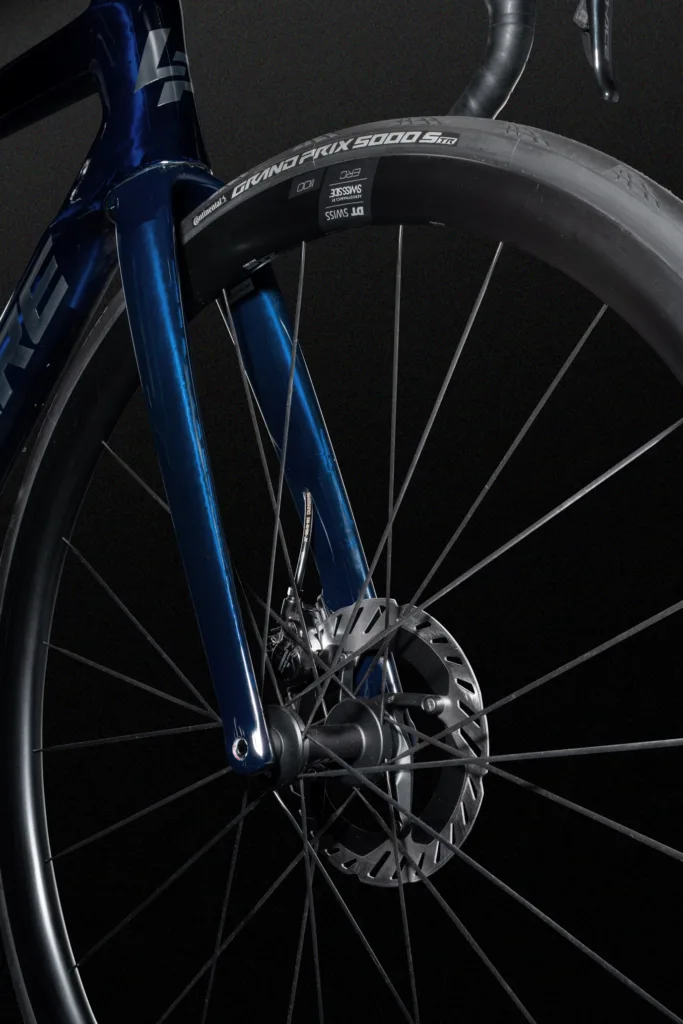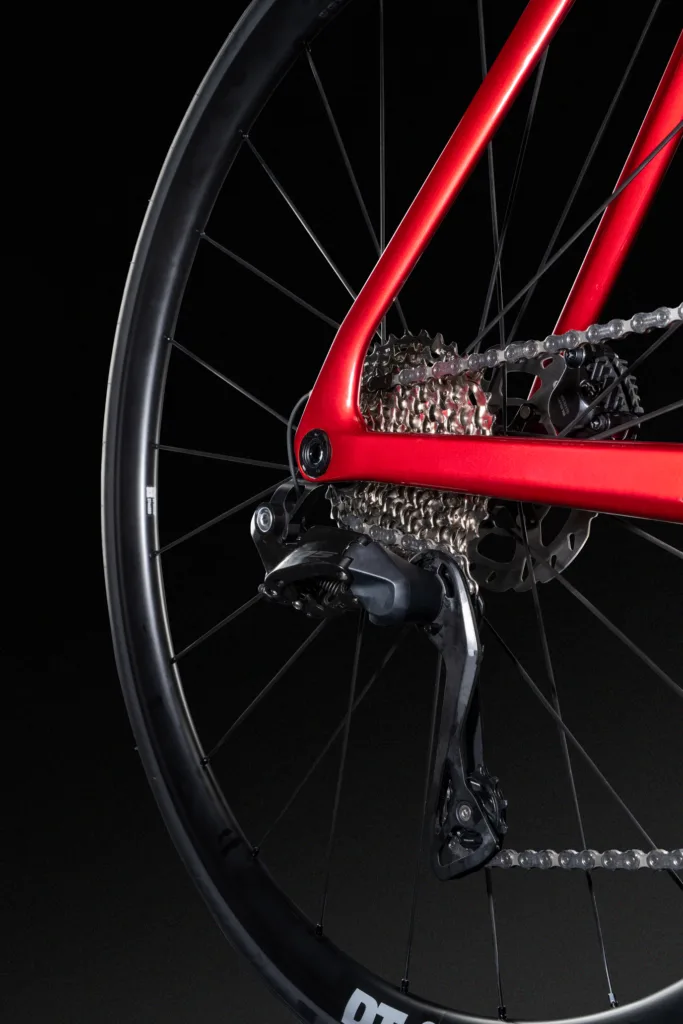Lapierre, known for its achievements in professional cycling, recently unveiled the sixth generation of its iconic Xelius series: the Xelius DRS model year 2025. This new model promises not only aerodynamic improvements and more comfort, but also that it remains light and versatile. But how innovative is the bike really? And is it a step forward for riders who expect more from their road bike?

A Story of Evolution
The Xelius DRS MY25 builds on more than 15 years of constant refinements. Since the launch of the first Xelius in 2010, Lapierre has continued to adapt the model to the ever-changing demands of cycling. The DRS MY25 is the result of years of innovations, focusing on a balance between aerodynamics, weight and comfort.
According to Lapierre's press release, the new DRS 15% makes more aerodynamic gains compared to the previous Xelius SL3 and the Aircode DRS. On paper, this seems like a significant improvement, but the question is how these figures translate to the road. It is a familiar marketing approach to inflate small gains in the hunt for sales, but in practice the average cycling enthusiast may hardly notice those 14 watts of savings at 50km/h.

Lapierre promises much(silkiness)
What always sets Lapierre apart from other brands is their commitment to building bikes that are versatile. The Xelius DRS is positioned as a bike that should perform on any terrain, whether sprinting, climbing or long tours on the flat. This is reinforced by the evolution of their 3D Tubular frame design. For example, the seat tube is designed to absorb vibrations without sacrificing stiffness. Again, a promise of more comfort without sacrificing performance.
While comfort is an important issue for many riders, the question arises whether this should be the big selling point of the Xelius DRS. After all, there are many other bikes on the market that promise the same level of comfort, often at a lower price. Moreover, it is noticeable that Lapierre has shifted some of its focus to electronics and other high-end additions, such as electronic groupsets and tubeless-ready carbon wheels from DT Swiss.



Technical Highlights: what does it bring?
One of Lapierre's main focuses in the Xelius DRS is aerodynamic efficiency. With advanced software such as ANSYS FLUENT, the brand has redesigned the shape of the tubes to deliver better performance. The question to be asked here: is this really necessary for the average rider? The technical improvements seem mainly aimed at riders who want to optimise their performance down to the last detail, but will recreational cyclists actually benefit from these improvements?


In addition, Lapierre has chosen to offer two different carbon lay-ups, the UD SLI for amateur cyclists and the UD SLI TEAM for elite riders. This sounds like a smart move to appeal to different audiences.
Who is This Bike For?
One of the strengths of the Xelius DRS is undoubtedly its versatility and ability to perform well on all terrains. The frame is compatible with wider tyres, up to 32 mm, which means this bike will hold its own even in the toughest conditions, such as gravel or cobblestones. For riders looking for a bike that can do more than just perform on smooth asphalt, this could be an attractive feature.

With this line-up, it sounds like the bike is made for everything and everyone. In marketing terms, if you are everything to everyone, then again you are nothing to no one. The price tag will put many off, especially considering the competition in this segment of the market. With brands offering similar performance at a lower price, you do need a bit more brand preference.
Conclusion: A Step Forward, But For Whom?
The Lapierre Xelius DRS undoubtedly offers impressive technical improvements and builds on a long-standing tradition of innovations. But whether it is the most logical choice for the average cyclist remains to be seen. As an average cyclist, you might not feel that one or two watts difference. We'll really have to test it out!
For those looking for a high-end road bike that can perform anywhere from slippery roads to rough terrain, the Xelius DRS is definitely worth considering. But for those primarily looking for a good all-round bike without the need for the very latest aerodynamic tweaks, there may be better options on the market.
Specifications
| Model | Frame | Front fork | Group set | Wheels | Weight | Price |
| XELIUS DRS 5.0 | Carbon UD SLI | Carbon UD SLI | Shimano 105 | Lapierre Road Alloy Disc | 8.4 KG | € 2,899 |
| XELIUS DRS 6.0 C1 | Carbon UD SLI | Carbon UD SLI | Shimano 105 Di2 | DT Swiss E1800 Spline | 8.4 KG | € 3,699 |
| XELIUS DRS 6.0 C2 | Carbon UD SLI | Carbon UD SLI | Shimano 105 Di2 | DT Swiss E1800 Spline | 8.4 KG | € 3,699 |
| XELIUS DRS 6.0 AXS | Carbon UD SLI | Carbon UD SLI | SRAM Rival ETAP AXS | DT Swiss E1800 Spline | 8.5 KG | € 4,199 |
| XELIUS DRS 7.0 C1 | Carbon UD SLI | Carbon UD SLI | Shimano Ultegra Di2 | DT Swiss ERC1600 | 8.2 KG | € 4,799 |
| XELIUS DRS 8.0 C1 | Carbon UD SLI | Carbon UD SLI | Shimano Ultegra Di2 | DT Swiss ERC1600 | 7.5 KG | € 5,999 |
| XELIUS DRS 8.0 AXS | Carbon UD SLI | Carbon UD SLI | SRAM Force ETAP AXS | DT Swiss ERC1600 | 7.6 KG | € 6,999 |
| XELIUS DRS 9.0 | Carbon UD SLI | Carbon UD SLI | Shimano Dura-Ace Di2 | DT Swiss ERC1400 | 7.2 KG | € 8,499 |
| XELIUS DRS 10.0 | Carbon UD SLI TEAM | Carbon UD SLI TEAM | Shimano Dura-Ace Di2 | DT Swiss ERC1100 | 6.8 KG | € 10,000 |
| XELIUS DRS Frame set | Carbon UD SLI TEAM | Carbon UD SLI TEAM | N/A | N/A | N/A | € 3,999 |
| XELIUS DRS SO Frame set | Carbon UD SLI TEAM | Carbon UD SLI TEAM | N/A | N/A | N/A | € 3,999 |
more on cycling? Lapierre Introduces new Crosshill CF Gravelbike with cool docu
You can find all the info on Lapierre's site: https://www.lapierrebikes.com/





